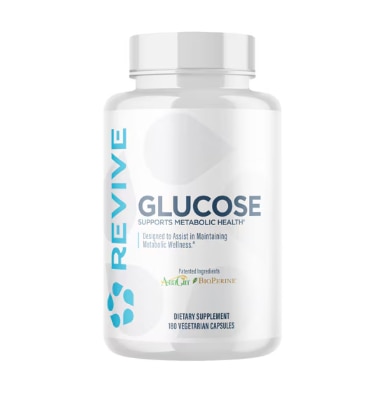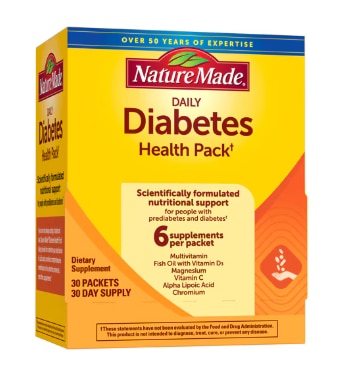Experiencing an elevated blood sugar reading, also known as hyperglycemia, can be scary, especially when it starts to climb into the 300 range. While ideal blood sugar ranges vary by individual, blood sugars consistently above 180 mg/dL are generally considered high, and blood sugars over 300 mg/dL on a regular basis are a clear indication that action is needed to prevent serious diabetes-related complications down the road.
Let’s dive into the reasons why blood sugar spikes and what you can do to help get your levels into an ideal range more consistently.
Please note, the information is not considered professional medical advice. Always consult with your healthcare team for personalized guidance regarding your diabetes management.
Why elevated blood sugar matters
Sustained elevated blood sugar over time can lead to both immediate and long-term health complications. It can result in conditions like diabetic ketoacidosis (DKA) or hyperosmolar hyperglycemic state (HHS), both of which are considered medical emergencies.
Over time, high blood sugars can damage blood vessels and nerves, contributing to complications such as heart disease, kidney disease, nerve damage (neuropathy) and vision problems.
What causes elevated blood sugar?
Below are a few common culprits contributing to high blood sugars:
Dietary factors
What you eat has a big impact on your blood sugar. Carbohydrates are broken down into sugar in the body. This sugar then enters the blood stream and raises the blood sugar. Consuming excessive amounts of carbohydrates, especially simple sugars found in candies, sodas and processed foods, can overwhelm your body’s ability to manage glucose, leading to a rise in blood sugar.
Medication issues
Oral diabetes medications are designed to help your body utilize it’s own insulin, produce more insulin, or improve insulin sensitivity. Missing doses of these medications can cause your blood sugars to rise.
If you take insulin, taking too little insulin for your carbohydrate intake can also result in high blood sugars. Keep in mind that insulin can lose its potency if it expires or is exposed to extreme temperatures.
Illness and infection
When your body is fighting off an illness or infection, it experiences stress. Stress hormones like cortisol and adrenaline can cause the liver to release more glucose and can make cells more resistant to insulin, leading to elevated blood sugars. Even minor illnesses like the common cold, flu, or urinary tract infections (UTIs) can significantly impact blood sugar levels.
Stress (physical or emotional)
Beyond illness, other forms of stress can also impact the blood sugar. Both physical stress such as an injury or recent surgery and emotional stress like anxiety or grief prompt the release of hormones that cause blood sugars to increase.
Lack of physical activity
Physical activity plays a big role in blood sugar management. When you’re physically active, your muscles use glucose for energy, helping to lower your blood sugar. A sedentary lifestyle means less glucose is utilized, contributing to higher blood sugars.
Other medications
Certain non-diabetes medications can raise the blood sugar. Medications such as corticosteroids (e.g., prednisone) and some diuretics can significantly increase blood sugar levels. Make sure to discuss your medications with your healthcare provider so you can determine if any of your medications may be impacting your blood sugar control.
Steps for treating elevated blood sugar
Here’s a step-by-step guide for what to do when your blood sugar is elevated about 300:
Check for ketones
This is the most important first step, especially for anyone with type 1 diabetes. When your body doesn’t have enough insulin to allow glucose into the cells for energy, it starts breaking down fat for fuel. This process produces acidic byproducts called ketones. A buildup of ketones can lead to diabetic ketoacidosis (DKA), a life-threatening condition requiring emergency medical attention.
You can use urine ketone strips, readily available at pharmacies or a blood ketone monitor to test for ketones. If you have moderate to large ketones, contact your healthcare provider immediately.
Hydrate
Hydration is key to helping your kidneys flush out excess glucose. Adequate fluid intake helps your kidneys excrete excess glucose through urine, and it prevents dehydration, which can worsen hyperglycemia. Make sure to drink plenty of water and avoid sugary drinks as these will only increase the blood sugar further.
Administer insulin (if applicable and prescribed)
Use your rapid-acting insulin (e.g., Humalog, Novolog, Apidra) as prescribed for correction doses. Be patient and resist the urge to take more insulin than prescribed in an attempt to lower your blood sugar faster. Over-correcting can lead to dangerous low blood sugars.
Light physical activity (if ketones are NOT present)
If your ketone test shows no ketones or only trace amounts, gentle movement can help. Engage in mild activities like a short walk, doing light household chores, or stretching.
Physical activity increases insulin sensitivity and helps muscles absorb glucose from the bloodstream, thus lowering blood sugar.
Engaging in physical activity when significant ketones are present can worsen DKA by accelerating the breakdown of fat into ketones.
Re-check blood sugar
Re-check your blood sugar approximately 1-2 hours after taking corrective actions (insulin, hydration, light activity). You should see a downward trend in your blood sugar levels. If it’s not coming down, or continues to rise, it’s time to seek medical help.
When to seek medical help
Make sure to contact your healthcare provider if you have moderate to large ketones present or if you are experiencing symptoms of Diabetic Ketoacidosis (DKA) such as Nausea, vomiting, abdominal pain, fruity-smelling breath, rapid, deep breathing, confusion or altered mental state, extreme thirst or frequent urination.
If you have type 2 diabetes, you should contact your health care provider if you are experiencing symptoms of Hyperosmolar Hyperglycemic State (HHS), which is more common thank DKA in individuals with type 2 diabetes. Symtoms include extreme dehydration, high fever, confusion, drowsiness, or loss of consciousness and seizures in severe cases.
Preventing future spikes
While knowing how to react to high blood sugar is important, preventing future spikes is the ultimate goal for long-term health. Consistency is key along with the following strategies:
- Take your insulin and/or other oral medications as prescribed.
- Monitor your blood sugar regularly and make adjustments to your care plan as needed.
- Be mindful of portion sizes and aim for meals that include a balance of carbohydrates, protein and healthy fats.
- Incorporate movement into your daily routine. Regular physical activity improves insulin sensitivity and helps your body use glucose more efficiently.
- Address the impact of stress on your health. Find healthy ways to cope with stress, as chronic stress can elevate your blood sugar.
- Work with your healthcare team to develop a “sick day plan”, which is a plan for managing your diabetes during illness. It should include instructions for medication adjustments, monitoring frequency and when to call for help.
- Make sure to have regular check-ups with your healthcare team to assess your overall diabetes control and make necessary medication adjustments.
In summary
A blood sugar reading over 300 mg/dL is not a cause for panic, but it is something that should be looked into further. Hydrating, taking prescribed medications and engaging in light activity (if no ketones are present) are helpful actions you can take to lower your blood sugar. It is important to recognize the signs of DKA or HHS and to seek emergency medical help immediately if these symptoms occur.
Proactive and consistent diabetes care is key to staying in control. This includes adhering to your medication regimen, maintaining healthy eating habits, engaging in regular physical activity, managing stress and following specific sick day rules.
Featured Products



The post Elevated Blood Sugar: What to Do When Your Reading Hits 300+ first appeared on The Upside by Vitacost.com.

